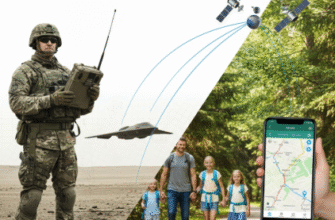The desire to move, to connect with others, to trade goods, and to explore the unknown is a fundamental part of the human story. Long before concrete highways sliced through landscapes, pathways formed organically. Animals first beat tracks through forests and across plains, seeking water and grazing land. Early humans, hunters and gatherers following herds or seeking new resources, naturally followed and widened these trails. These weren’t roads in our modern sense, but they were the vital first threads weaving communities together, however loosely.
These primal paths represent the genesis of our interconnected world. They were dictated by terrain – following ridges to avoid boggy ground, skirting impassable mountains, tracing riverbanks. They connected settlements, hunting grounds, and sacred sites. Walking these routes was not merely about transportation; it was about survival, social interaction, and the slow spread of ideas and technologies. Imagine small bands meeting at a crossroads, sharing news, exchanging tools, or arranging marriages. These simple dirt tracks were the arteries of early human society.
The Dawn of Engineered Roads
As societies grew more complex, settling into agricultural patterns and forming larger settlements, the need for more permanent and reliable routes became apparent. Simple footpaths weren’t sufficient for transporting harvested crops, building materials, or moving large groups of people efficiently. The first evidence of consciously constructed roads emerges from the ancient civilizations of Mesopotamia and the Indus Valley around 4000 BCE. These early attempts often involved clearing vegetation, leveling ground, and sometimes using logs or stones to stabilize muddy sections, particularly in urban areas like Ur or Mohenjo-daro where paved streets have been unearthed.
These weren’t yet the sophisticated networks we might imagine, but they marked a significant shift. Rulers understood the importance of controlled movement for administration, trade, and military purposes. Maintaining these early roads, however basic, required organization and resources, signaling the beginnings of state infrastructure projects. They facilitated the growth of cities by allowing for easier transport of food surpluses and trade goods.
The Roman Road Revolution
No discussion of ancient roads is complete without mentioning the Romans. They didn’t necessarily invent the road, but they perfected its construction and understood its strategic importance better than perhaps any civilization before them. The Roman road system, built primarily between 300 BCE and 200 CE, was an engineering marvel designed for durability, speed, and military efficiency. Phrases like “All roads lead to Rome” weren’t just metaphorical; they reflected a reality where a vast network radiated from the capital, binding the sprawling empire together.
Roman Engineering Prowess: Roman roads were built to last. They typically involved several layers: a deep foundation of packed earth and rubble (statumen), followed by layers of smaller stones mixed with mortar or clay (rudus and nucleus), and finally topped with tightly fitted paving stones (summa crusta), often cambered for drainage. They aimed for straight alignments where possible, cutting through hills or bridging valleys with impressive viaducts and bridges, many of which still stand today. Milestones marked distances, aiding travelers and imperial messengers.
The Romans constructed an astonishing network spanning over 400,000 kilometers (roughly 250,000 miles) across their vast empire. Of this, more than 80,000 kilometers (50,000 miles) were paved roads. This extensive system was crucial for rapid troop deployment, efficient communication via the cursus publicus (state courier service), and facilitating trade, effectively shrinking the empire and aiding its administration.
The primary driver behind this massive undertaking was military. Roads allowed legions to move swiftly to quell rebellions or defend frontiers. However, the economic benefits were undeniable. Trade flourished along these routes, connecting distant provinces and allowing goods like wine, olive oil, pottery, and metals to move across the empire, fostering economic integration and Romanization.
Medieval Pathways and Trade Routes
Following the decline of the Western Roman Empire, the magnificent road system fell into disrepair in many areas. Centralized authority weakened, and funding for maintenance evaporated. Travel became more hazardous and slower. However, roads and pathways didn’t disappear; they adapted. Local communities maintained sections essential for their own needs. Old Roman alignments were often still followed, even if the sophisticated surfacing was gone.
During the Middle Ages, two types of routes gained prominence: pilgrimage trails and long-distance trade routes. Religious fervor drove thousands to undertake long journeys to sacred sites. Routes like the Camino de Santiago in Spain became major thoroughfares, complete with inns, hospices, and shrines catering to pilgrims. These journeys fostered a sense of shared European identity and facilitated cultural exchange alongside religious devotion.
The Silk Road and Beyond: Simultaneously, vast intercontinental trade networks, collectively known as the Silk Road, connected East and West. This wasn’t a single road but a shifting network of caravan routes stretching across Central Asia, linking China with the Mediterranean world. Merchants braved deserts and mountains, transporting not only silk but spices, precious metals, technologies (like papermaking), and crucially, ideas and religions (like Buddhism and later Islam) across continents. These routes demonstrate how pathways have always served as conduits for more than just physical goods.
From Coaching Inns to Modern Highways
The early modern period saw a gradual improvement in road infrastructure, particularly in Western Europe. Increased trade, the consolidation of nation-states, and the rise of postal services spurred demand for better transport. The development of the stagecoach in the 17th century made regular, scheduled travel between cities possible, leading to the proliferation of coaching inns along major routes – vital hubs for travelers to rest, eat, and change horses.
The 18th and 19th centuries brought the Turnpike Trusts in Britain and similar initiatives elsewhere. Private companies or trusts were granted the right to build and maintain sections of road, charging tolls to users. This led to significant improvements, employing engineers like Thomas Telford and John McAdam, who developed better road construction techniques (like macadam surfacing) focusing on drainage and layered foundations, principles still relevant today.
The arrival of the railway dramatically changed land transport, seemingly eclipsing the road for long-distance travel for a time. However, the invention of the automobile at the turn of the 20th century reignited the importance of roads on an unprecedented scale. Initially a novelty for the wealthy, the car rapidly democratized personal transport.
The Age of the Automobile and Global Networks
The 20th century was defined by the car and the roads built for it. Governments embarked on massive road-building programs, creating national highway systems and, later, extensive motorway and interstate networks. These weren’t just upgrades; they represented a new philosophy of high-speed, high-capacity travel designed to connect cities, facilitate commerce, and support suburban lifestyles. Systems like the German Autobahn and the US Interstate Highway System transformed landscapes and societies.
Today, our world is crisscrossed by millions of miles of roads, from simple rural tracks to complex urban interchanges. They are essential for global supply chains, daily commutes, tourism, and emergency services. While facing challenges like congestion, pollution, and the need for sustainable alternatives, roads remain fundamental connectors.
From the first animal trails to the intricate networks of today, roads and pathways are more than just infrastructure. They are historical records, etched onto the landscape, telling stories of migration, conquest, trade, faith, and the enduring human need to connect. They shaped settlements, facilitated empires, spread cultures, and continue to be the physical links that bind our global community, reminding us that the journey itself has always been integral to human progress.
“`






